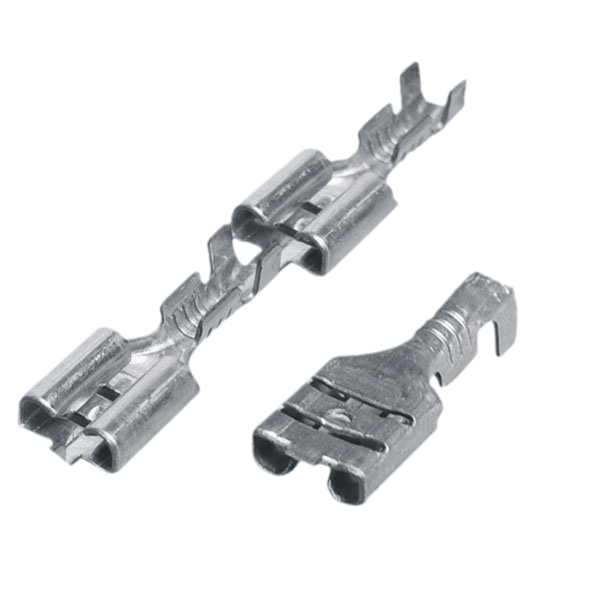In the intricate web of an automotive nervous system, wiring harnesses are the lifelines connecting various electronic components. Each component of this network plays a crucial role in ensuring optimal performance, security, and efficiency. The core of this network is a seemingly rudimentary but indispensable component: terminals. The significance of terminals in automotive wiring harness systems cannot be overstated, as they play a pivotal role in ensuring reliable connections, electrical integrity, and overall functionality.

Terminals, often referred to as connector pins or contacts, are the endpoints of wires within a wiring harness that establish a connection with corresponding connectors. Their primary function is to facilitate the transmission of electrical signals, enabling seamless communication between different components in a vehicle. They are usually made of metal and can connect wires and cables for transmitting electricity, signals, and data.
Various types of crimping terminals are used in cars, each designed for specific applications:
- Blade Terminals: Male and female terminals are used to connect two wires.
- Ring terminal: suitable for screw or screw-type connections.
- Fork Terminal: Used for quick disconnection.
Bullet terminal: suitable for quick connection and disconnection situations.
1. Ensuring Electrical Integrity
One of the core responsibilities of terminals is to maintain electrical integrity. As conductive interfaces, they carry electric current from one point to another without degradation. The quality of this connection is crucial for the proper functioning of electrical systems, ensuring that signals reach their destination with minimal loss or interference.
2. Facilitating Connectivity
Terminals act as intermediaries between the wires and connectors within a harness. They provide a secure and stable point for connection, allowing for the efficient flow of electricity. The design and quality of terminals directly impact the ease of assembly and disassembly, a critical factor during manufacturing, repairs, or upgrades.
3. Adaptability to Diverse Environments
Automobiles operate in a myriad of environments, from the scorching heat of the engine compartment to the more controlled conditions within the passenger cabin. Terminals must withstand temperature variations, vibrations, and exposure to moisture, chemicals, and other environmental factors. Advanced materials and coatings are employed to ensure terminals remain resilient under diverse conditions.
4. Diverse Types for Varied Applications
Terminals come in various types, each tailored to specific applications. From blade terminals to ring terminals, each serves a unique purpose in the grand orchestra of an auto wire harness. Specialized terminals may include those designed for high current applications, ensuring they can handle the power demands of components like starters and alternators.
5. Precision in Signal Transmission
In the era of advanced automotive electronics, where sensors, control modules, and entertainment systems communicate incessantly, the precision of signal transmission becomes paramount. Terminals, with their carefully engineered designs, contribute to maintaining signal quality, reducing the risk of data corruption or loss during transmission.
The evolution of automotive technology has led to innovations in terminal design. Features such as gold plating are incorporated to enhance conductivity and resist corrosion, ensuring a more extended lifespan for the terminals. Additionally, advancements in manufacturing processes contribute to the production of terminals that are not only durable but also cost-effective.
As vehicles become more complex, the challenges faced by terminal designers multiply. High-density connectors, miniaturization, and the need for increased functionality within limited space pose engineering challenges. Solutions involve the use of advanced materials, precision machining, and the incorporation of smart technologies to address these complexities.
JST terminal: JST is a product of Japan's Shuo Si Te Company, characterized by its small size and convenient connection, widely used in electronic devices.
AMP terminals: AMP is a brand under TE Connectivity, characterized by durability, high temperature resistance, and waterproofing, widely used in automotive circuits.
TYCO terminal: TYCO is a brand under TE Connectivity, characterized by stability, reliability, and suitability for high pressure and high temperature environments.
Molex terminal: Molex is a product of American company Molex, characterized by small size, easy connection, and high reliability.
Any questions, feel free to Contact us now:

Website: https://www.typhoenix.com

Email: info@typhoenix.com

Contact: Vera

Mobile/WhatsApp: +86 15369260707

Post time: Jan-12-2024

